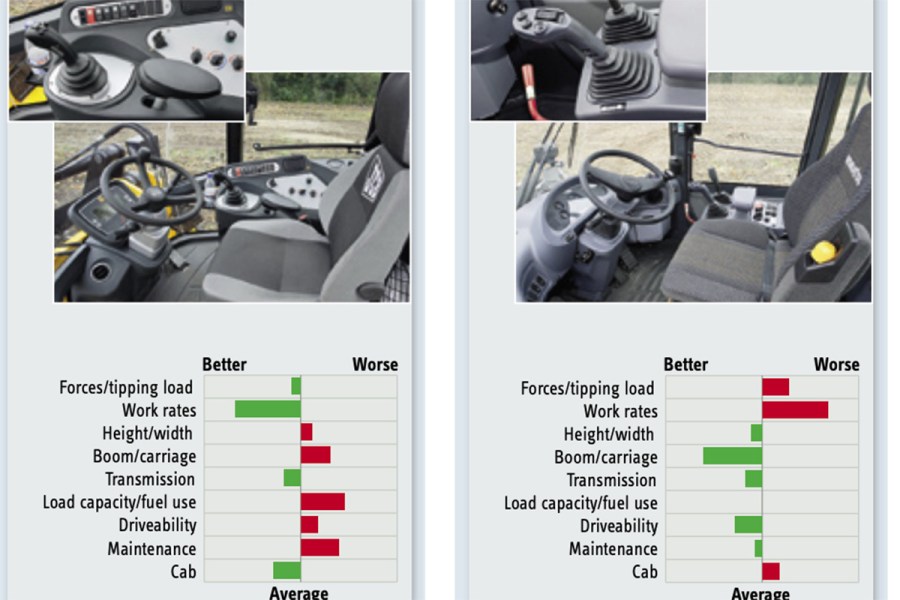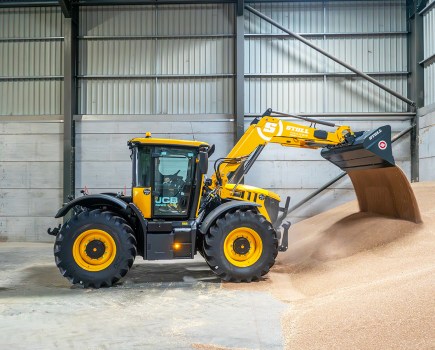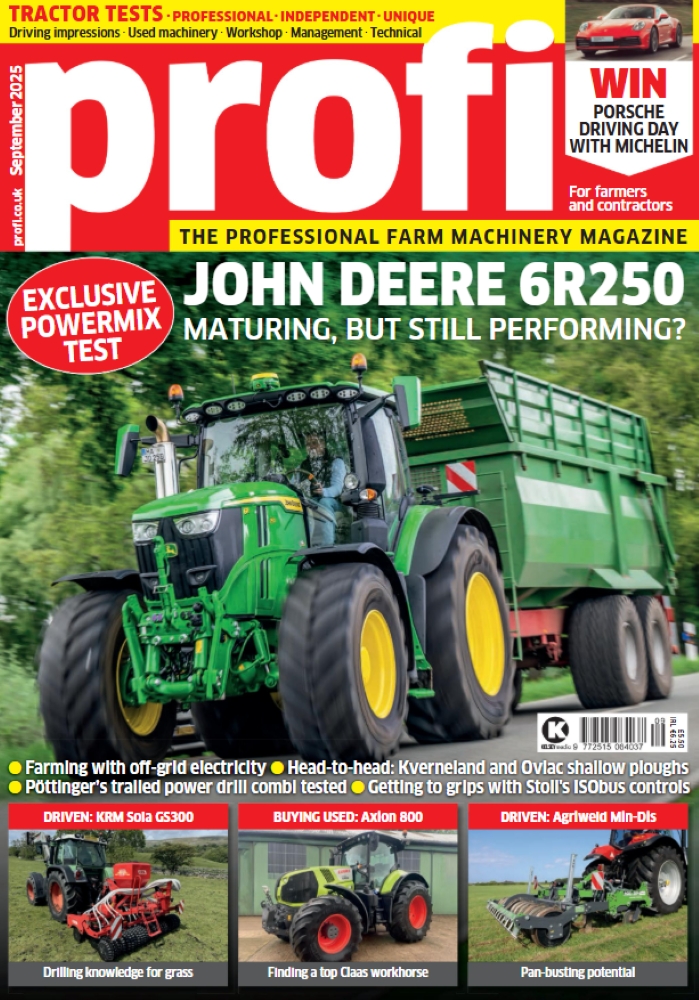Practical test: JCB, Komatsu, Liebherr and Terex After detailing machine performance in Part I and day-to-day handling in Part II, this final chapter in our shovel trilogy sums everything up
On the whole, this wheeled loader quartet did well in our test. They turn out to be more than industrial shovels, and are in fact well suited to agricultural work — and on that score, JCB points out that its development effort focuses specifically on farming’s requirements. Having said that, we found that all four machines have one potentially significant disadvantage over an equivalent tractor.
The three loaders with hydrostatic drive – Komatsu, Liebherr and Terex – lack the shove to carry a substantial mass of crop quickly up a steep grass or maize silage clamp. JCB’s torque converter transmission gets round that shortcoming, yet (at least as far as the test machine goes) the high-powered 434S Agri comes with a fuel consumption penalty compared to tractors of a similar power. Consequently, and at least in silage operations where material is dumped in front of the clamp, these hydrostatic wheeled loaders are best suited as excellent backup for a high-capacity mainline unit. Our various tests show, not surprisingly perhaps, that each wheeled loader has its own strengths in different disciplines.
This is something that really should be taken into account when making a buying decision. Each machine’s strengths and weaknesses are summarised in the following panels, which carry a graph showing the individual machine’s performance alongside the group average.
For more up-to-date farming news click here and subscribe now to profi and save






